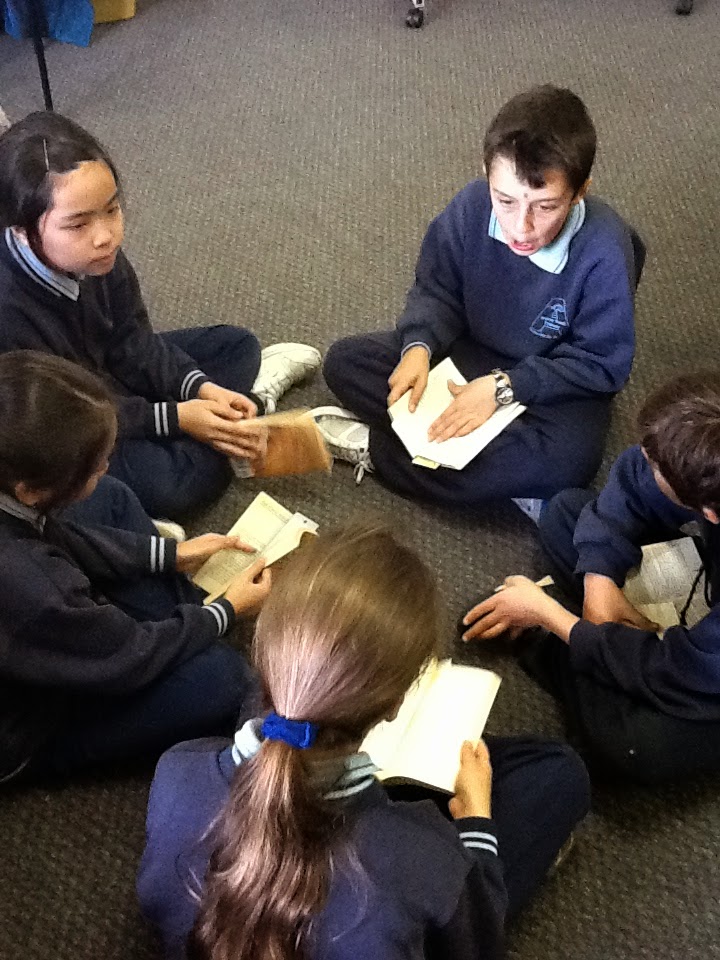Adequately Preparing Student Writers to Write PERSUASIVELY
I have previously stated my belief that teaching students to write persuasively, (to influence a
reader) is about far more than writing to a formula, or recipe!
What is the First Step?
I believe we need
to introduce young writers to the language of persuasion.
The language of introduction
I believe, I feel, I think,
The language of connectives
however, therefore, because, although, yet, in
addition to.
The language of conclusion
In summary, I recommend, In conclusion
In the classroom we begin by fostering quality conversations…
In the classroom we begin by fostering quality conversations…
A sea of talk should pervade classroom
discussion and conversation around pertinent issues. Talking to learn should be
a guiding principle in planning lessons. Successful discussion requires
students to reflect on what they are doing as learners. If students don’t know the process of
discussion they remain dependent on the teacher to tell them what to do, how to
solve problems and how to ‘think.’ They are locked out of these vital conversations.
Developing
Opinions:
Ample activities
involving talking and listening, arguing, influencing and persuading provide opportunities
to offer opinions, and defend them. This is vital grounding to engage in
thinking.
Activities
That Support Developing Opinions
4
Corners
Encourage the
development of opinions and thinking about issues. Identify an issue in the
news, or an ethical dilemma. Ask
students to assume a position on the issue. Students move to a particular
corner of the classroom based on their individual viewpoint.
The 4 corners correspond to the following:
Strongly agree
Strongly disagree
Dis-agree
Agree
Students move to the area that corresponds to their view, then defend their position on the issue. They move if convinced by the arguments put forward in the discussion.
The 4 corners correspond to the following:
Strongly agree
Strongly disagree
Dis-agree
Agree
Students move to the area that corresponds to their view, then defend their position on the issue. They move if convinced by the arguments put forward in the discussion.
I recommend this activity because it:
*takes little preparation
*encourages thinking
*develops opinions across a range of issues.
*takes little preparation
*encourages thinking
*develops opinions across a range of issues.
Horseshoe:
Once a week have the students vote on an issue.
They write either YES,
NO or MAYBE on a piece of paper without any prior discussion Form a horseshoe with the yes side and
no side facing each other and the maybes at the top of the horseshoe. The teacher stands in the middle.
Students are only allowed to talk. The teacher tosses a ball alternatively
to all members of each side. Students express their opinion and give a short
address as to why they feel that way. Once
everyone has voiced their opinion, ask if anyone has changed sides. If they
have, they move and then say why. Play Horseshoe as a lead in activity before
actually requiring students to write on issues. After a few weeks, you can
extend the game into an opportunity to write.
Partner
Debates
Pair off students and
ask them to present an agreed point of view on a variety of issues. -Opinions
must be backed up by evidence.
News Views
Use news articles concerning current issues to discuss. Divide the class into two groups, (for and against) then defend a position.
Time to Talk
Over a period, (two weeks) have each student prepare a short talk defending a particular position and present it to the class.
News Views
Use news articles concerning current issues to discuss. Divide the class into two groups, (for and against) then defend a position.
Time to Talk
Over a period, (two weeks) have each student prepare a short talk defending a particular position and present it to the class.
Assessing
Student Thinking to Guide Further Modelling and Instruction
Inquiry:
•Do students ask fruitful questions?
•Do
students consider reasons/evidence?
•Do
students seek explanations?
•Do
students explore alternatives?
•Do
students engage in self correction?
•Do
students stick to the point when defending a position?
Reasoning:
•Do student clarify meanings?
•Do students make distinctions?
•Do
students make comparisons?
•Do
students provide examples?
•Do
students make relevant inferences?
•Do
students make considered judgements?
Interaction in Discussion:
•Do students listen to each other?
•Do
students share the discussion?
•Do
students assist each other in discussions?
•Do
students explore disagreements?
•Do
students show respect for opposing views?
Conversations around Literature that help Both
Reading and Writing.
Many students read without questioning a text or analyzing the author's viewpoint. Encourage students to question the author (QTA) and analyze a text. By thinking out loud about our own thinking we show students how to consider:
•the author's
purpose.
•multiple viewpoints, possible gaps in the text.
•multiple viewpoints, possible gaps in the text.
We can assist students to develop stronger viewpoints by reading related or opposing versions of the same tale/topic/ issue. Assist students to recognize that there are not only different versions of a story, but also different viewpoints to consider.






Comments
Post a Comment